#books RSS
With and without pictures
With and without pictures
Continuations
I can’t say that Metroid Prime Trilogy – I just finished Metroid Prime 3: Corruption – would be among my favorite games of all time. I don’t actually have any sort of list like that anyway. But the good parts are so good! I like exploration. The scanning almost feels like detective work. I like movement in a world, with a couple of caveats. I like those worlds a lot.
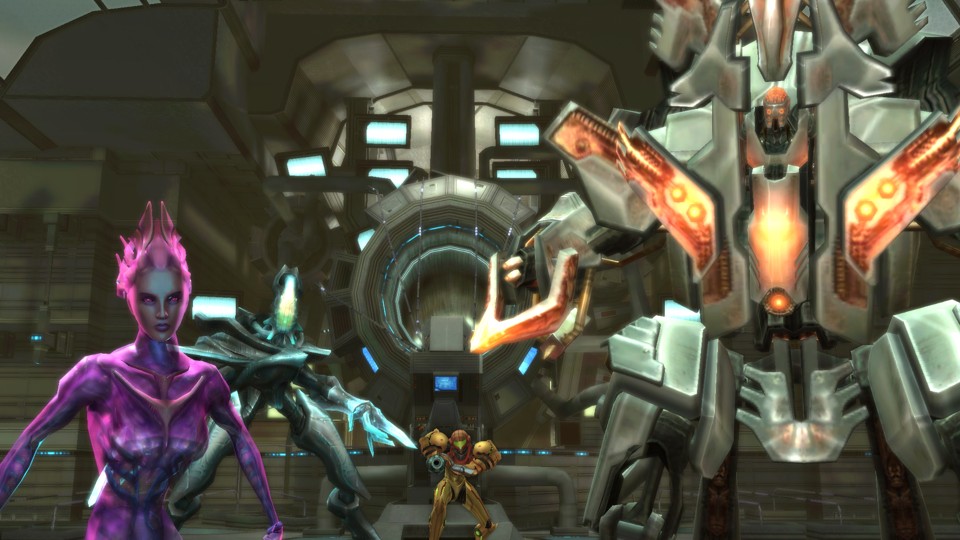
And all the fiddly parts that drag the series down a bit? Most of them seem to be massaged into an acceptable shape by the third game.
If they manage to make Prime 4 with that gameplay, quality-of-life improvements and all, I would be happy to play it. Maybe someday we’ll see what the canceled version of Prime 4 looked like, but for now, the current one seems pretty fine.
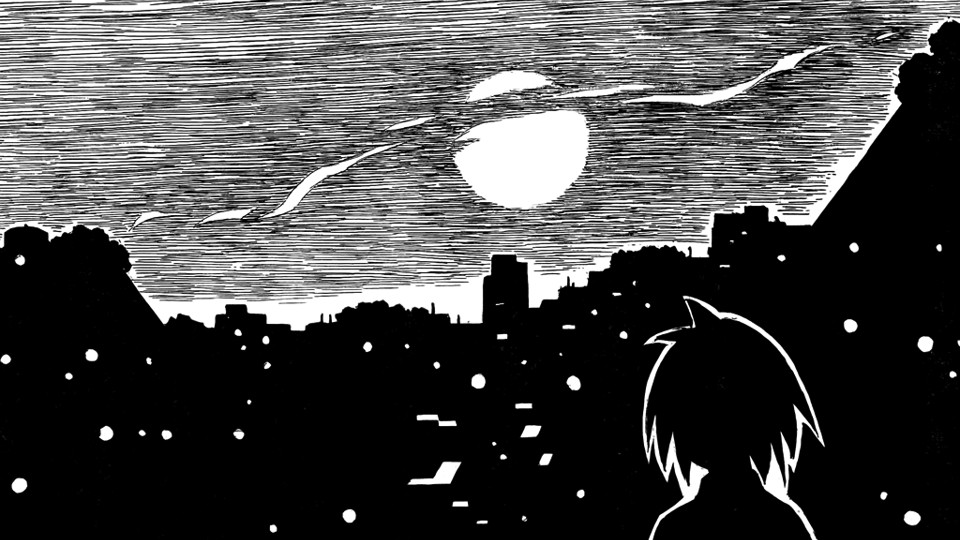
If you have a sort of “chill beats to study to” equivalent in a book form, would you want it to change much, if at all? After Yokohama Kaidashi Kikō, other books by Hitoshi Ashinano I read – PositioN, Kumabachi no koto and Kotonoba Drive – have very similar vibes, structure and art style. And that’s a good thing in my book!
Eternium is another podcast game that won’t bother you with its monetization. You’ll do a lot of grinding, but that’s the point.
What if fire cleaning simulator? That’s a silly but accurate way to describe Nuclear Blaze. Spreading flames will be your main antagonist in this neat-looking platformer. You also save cats!
So, Quake II, huh.
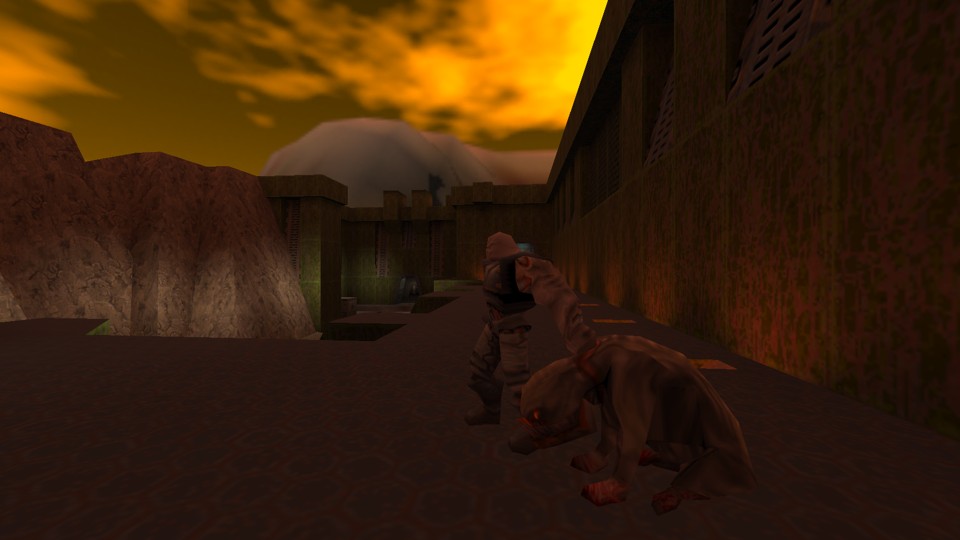
Zaero for Quake II is a fan-made campaign. Although it has a couple of unique features, it doesn’t stray far from the original and therefore fits nicely with the other official add-ons.
Picturesque
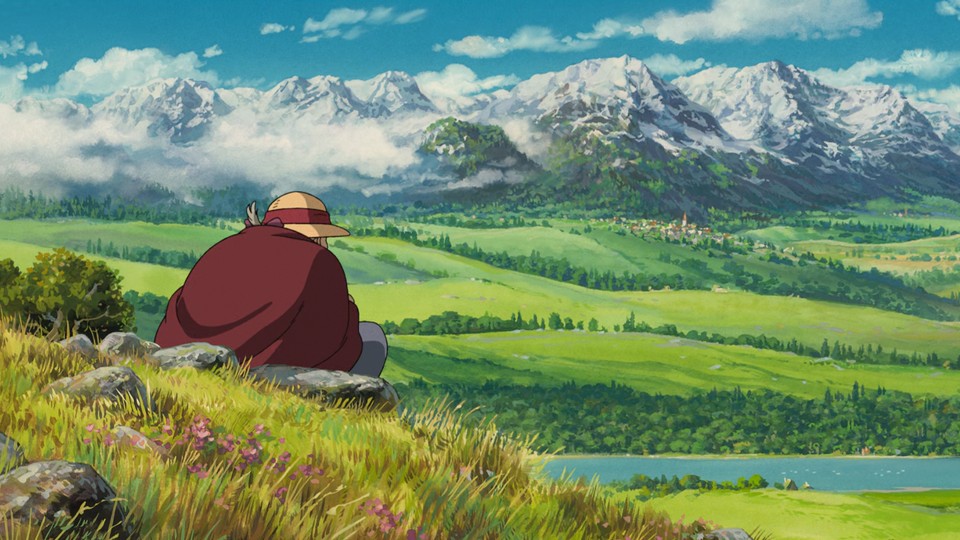
I didn’t like Howl’s Moving Castle that much. While Kiki is more or less the same, Nausicaä is a clear expansion, the story of the book and the movie are very different, in a way that reading the book first made watching the movie very confusing for me. What they have in common is that I don’t think they sold the romance that well, if at all. The characters were… eh. I wasn’t on board with the themes.
There is a valid criticism of Miyazaki’s handling of war that I won’t go into here, and Howl’s is a great example for that discussion.
Ponyo on the other hand is simply adorable. In a way, it is a return to My Neighbor Totoro, in a slightly bigger way. And that’s alone is enough for me.
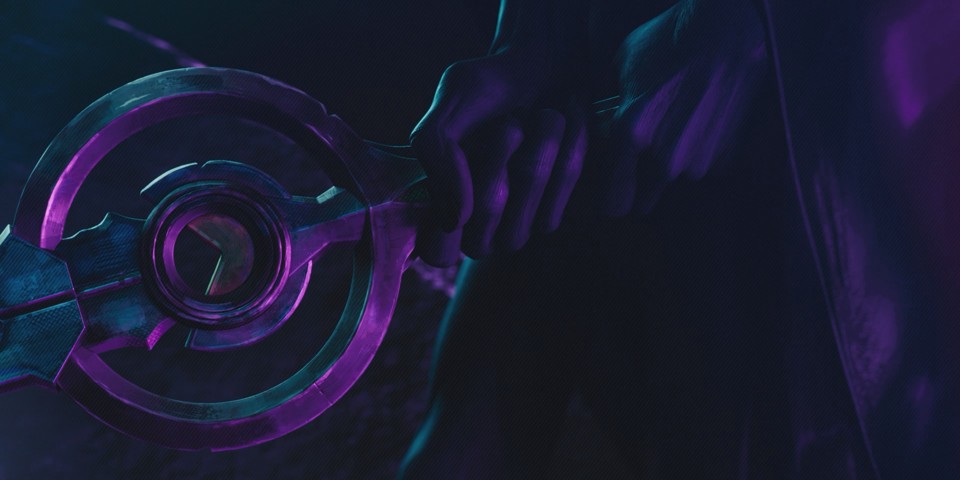
I don’t think I had a choice not to see Secret Level. So I did. The best episodes are the ones where the story has to deal with a game mechanic, so it is very disappointing that most of them chose the same one: respawn. The others just chose to tell the story in a world of a game, and for 10 minute episodes, sometimes even less, they were fine stories. Ultimately, not a disappointment, not by a long shot, but overall just not a memorable anthology.
Hekki Alpha
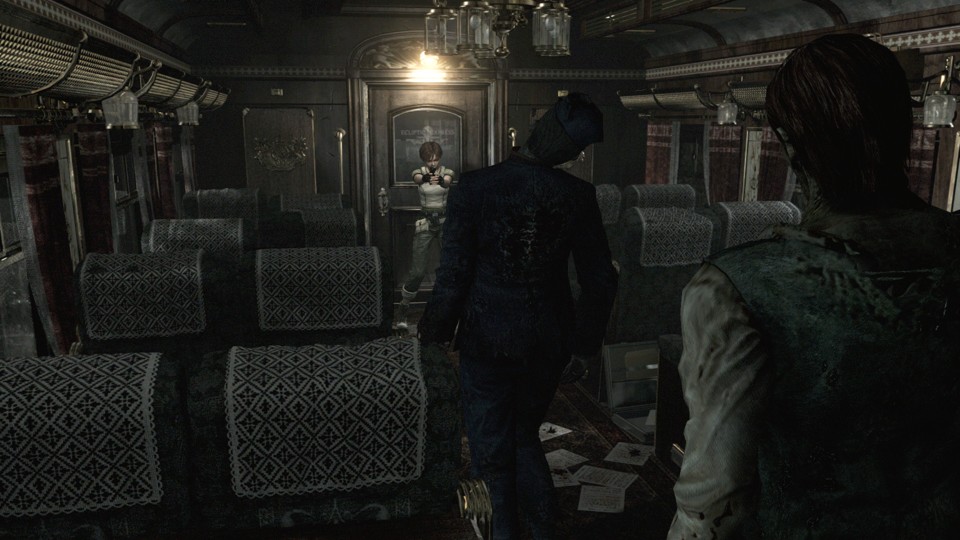
It’s easy to see why the Resident Evil formula has survived to this day (hello, Signalis). It works! Even if the game, like Resident Evil 0, isn’t particularly inspiring and mostly repeats things we’ve already done with just a handful of innovations, it’s still enjoyable.
Anopek is a small metroidvania shooter. Nothing special, just nice.
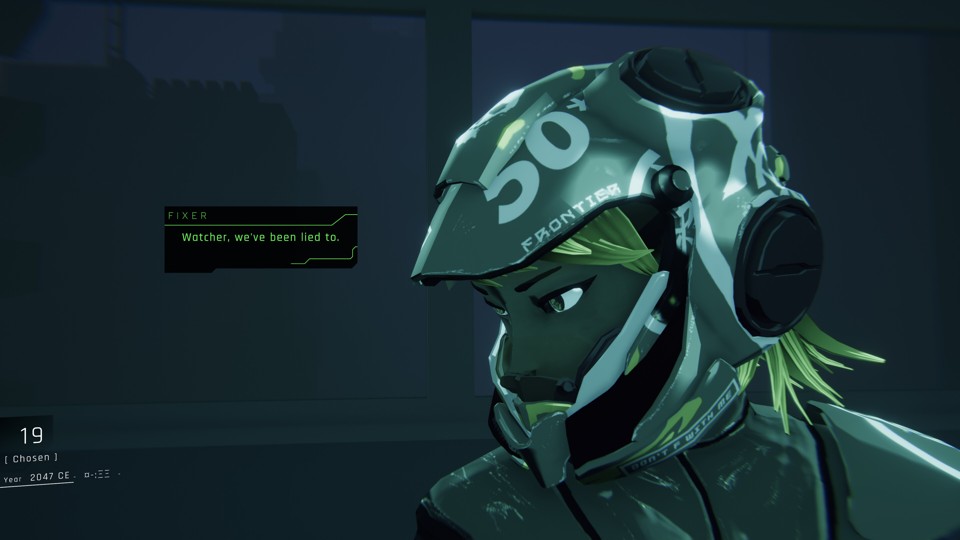
1000xRESIST is inspired by recent history, often directly: expect a global pandemic, immigrant life, high school shenanigans, and other things I won’t spoil. And it’s very cool to see underrepresented people both on and behind the screen, so to speak. But ultimately it is a sci-fi story, and a good one. Maybe slightly garish visuals. A bit. :)
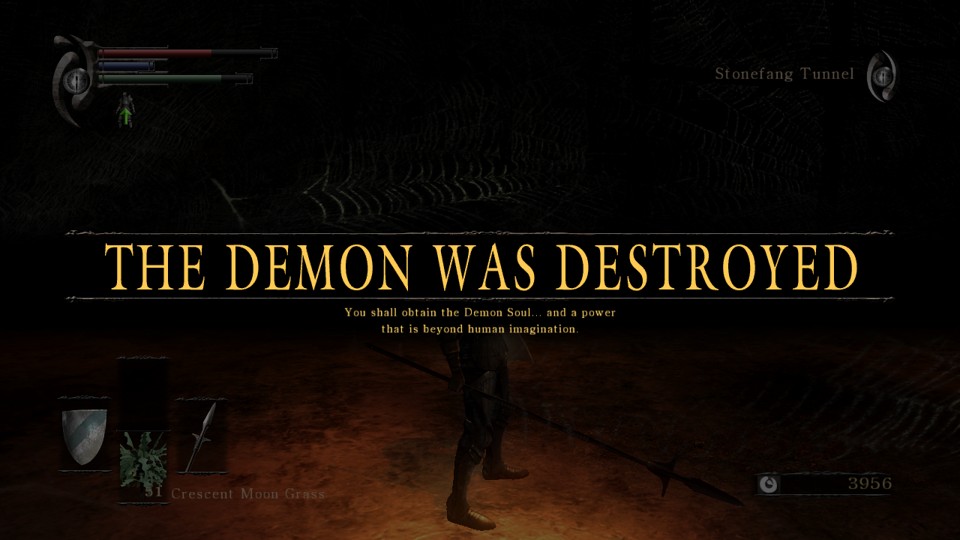
It’s hard to talk about Demon’s Souls, or any soulslike game for that matter, without, you know, talking about it. I won’t go into too much detail, but let’s do it.
I think the discussion about difficulty in games should instead be about accessibility. And in this case I mean accessibility in the broadest sense. I believe that games can and should be accessible to many more people than they are now. And the fact that we often talk about “easy mode” instead is very annoying.
It’s especially annoying because these games, at least the FromSoftware games that I’ve played – played Dark Souls 1; finished 2 and 3, and now finished Demon’s Souls – actually give you a lot of tools to lower or raise the difficulty (if you can play them at all, that is), and they do it well.
And of course it is even more annoying that we have to have this discussion instead of having one about the games themselves. Because they are pretty good, you know! Even if they just threw out the whole combat system that gives way to this annoying and misdirected discussion, there would still be a lot to like. The world, the exploration, the story, the atmosphere, the feeling of progress. Even muddy and dark in the way games were at the time, but still beautiful visuals. Good, good I tell ya!
Wendell & Wild is funny, macabre, and progressive. Not perfect (the deadnaming bit comes to mind), but still pretty enjoyable.
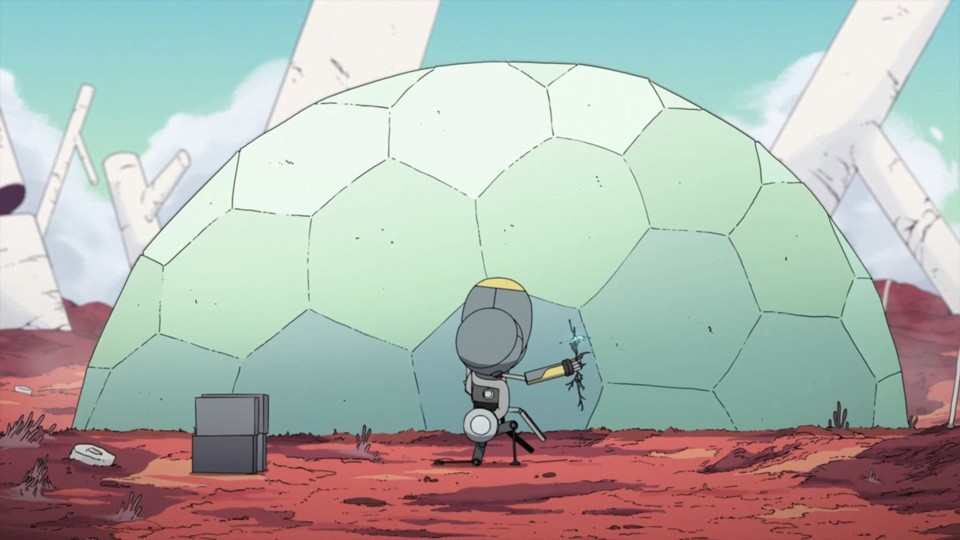
There is almost a whole genre of speculative evolution, of which After Man is probably the most famous. Scavengers Reign took that – mushed a bit with art by Mœbius, – as the setting for a story about people stranded on an alien planet. People from Nostromo, not Enterprise. And it’s also, like Alien, a kind of horror. I was a little disappointed that the story was not bad, but, for lack of a better word, pretty classic for such an innovative setting. But it’s very beautiful to look at, in that unsettling kind of way.
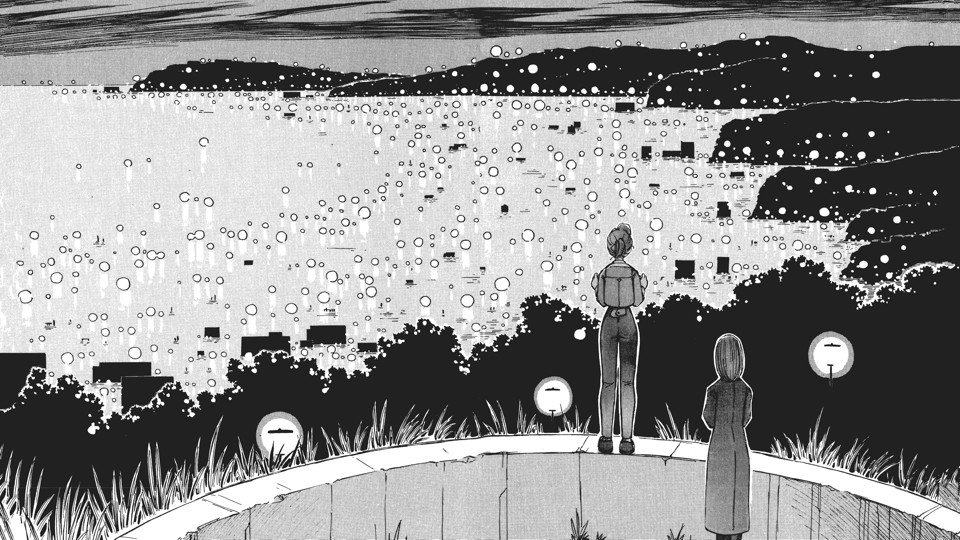
There are two ways to look at Yokohama Kaidashi Kikō (I mentioned it before). On the one hand, it’s a gentle look at the death of the world. Post-apocalyptic doesn’t have to be violent, cruel, or even unpleasant. We will all die, our cities, our world. So why can’t it be peaceful and beautiful?
You can get the most out of it by watching just 4 short episodes of an animation. The books expand on this and introduce more characters and their stories.
On the other hand, somehow optimistically, it can be seen as a transformation that our world can take – be forced to take – and still be fine. People, even if some of them are robots, will still be doing people things. There would be communities, celebrations, daily work. And maybe it’s better that way.
Here be dragons.
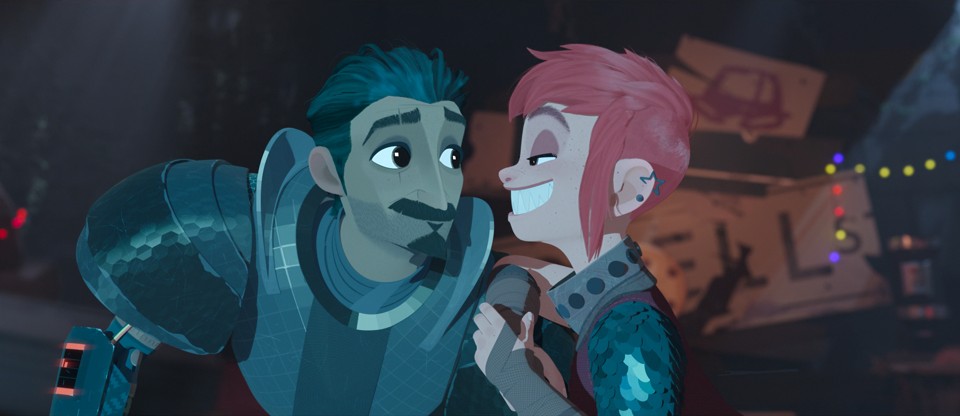
Nimona feels too real. I don’t want to spoil anything, but the wall is mentioned almost at the beginning, and you can guess that this is more of a contemporary story than it seems at first. Well, at first it seems like a mix of near future and medieval, but you know what I mean. It is also a personal story of a couple of misfits. I was expecting to write something like “and the book is better that the movie because of this and that”, but that is not the case. Some things have been moved around, the adaptation loses in some areas but gains in others. So I can’t recommend one over the other, but I can recommend both.
Remember Dragon Age? Do you think we will get another one? Too sad? Okay.
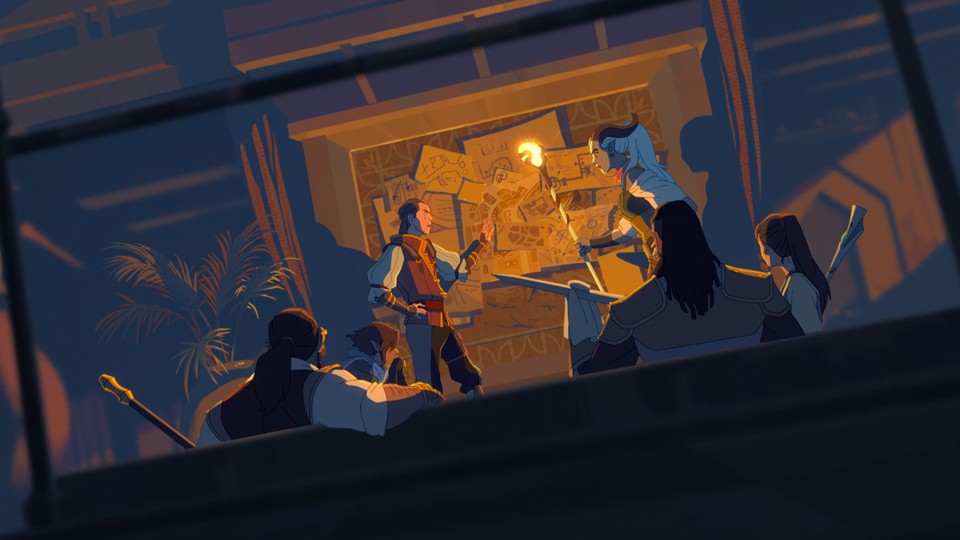
It’s hard not to be cynical about movies like The Sea Beast and Strange World, or even Nimona. They all tend to ignore the systemic nature of the problems, offer simple solutions that will not work, and overall do not stray far from the status quo. But there has been a slow shift toward something resembling an actual stance. And they are all still quite entertaining, with at least a clear improvement in the area of representation.
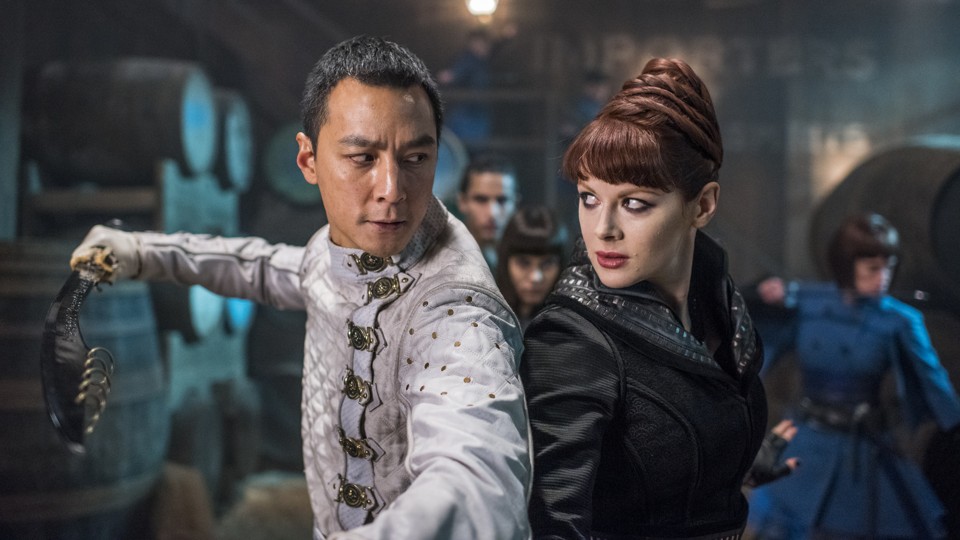
I also decided to finish Into the Badlands. I can’t vouch for the whole thing (I stopped, what, 5 years ago), but the last half of the last season and the show as a whole wasn’t bad, wasn’t bad at all. It’s a dark, post-apocalyptic story where everyone’s kind of bad and yada yada yada. But there’s still a lot of good stuff: complex and diverse characters, the story makes sense if you squint a bit and/or ignore the parts you don’t like, it looks good in a bleak sort of way, and of course the thing it was sold on, the fighting is great.
It seems that “dungeon crawler” has become more of a theme. Are you in a dungeon most of the time? Dungeon crawler! But it was a subgenre at one point. And one I barely touched, so I decided to correct that. Of all the options, I started with something modern, with quality of life improvements and all that.
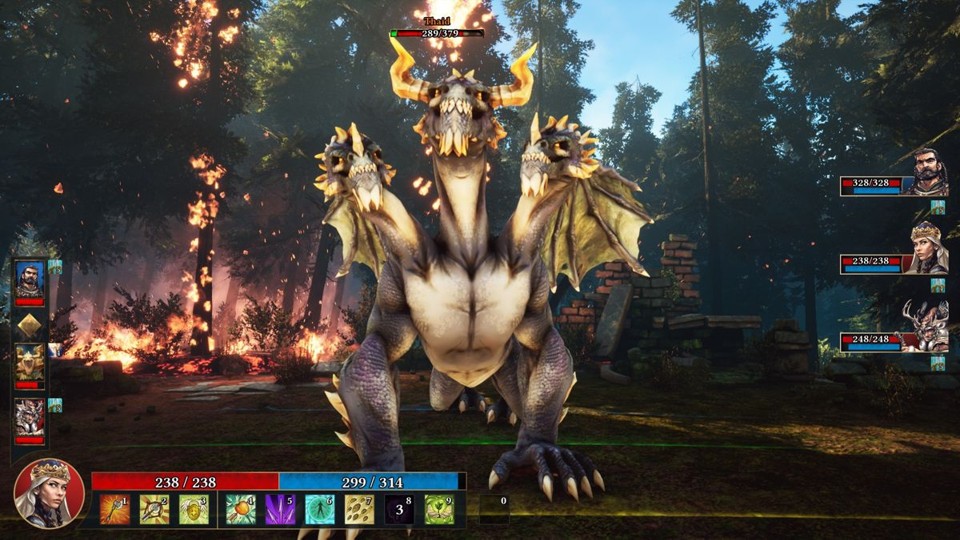
Operencia: The Stolen Sun is somewhere between high fantasy and fairy tale. It is also somewhere between epic – as the title suggests, the sun is stolen – and small and cozy. The maps are not too big, but can feel grand, you’re never dealing with big numbers, the puzzles have a storybook feel to them. Overall, it is like a good tabletop RPG campaign, one that would not challenge you, but would entertain you nonetheless.
I would call Soul Searching a walking simulator with light survival elements, but you are on a boat most of the time, so it is a sailing simulator with light survival elements. There is not much to add, just to mention that there are heavy themes, the name does not lie.
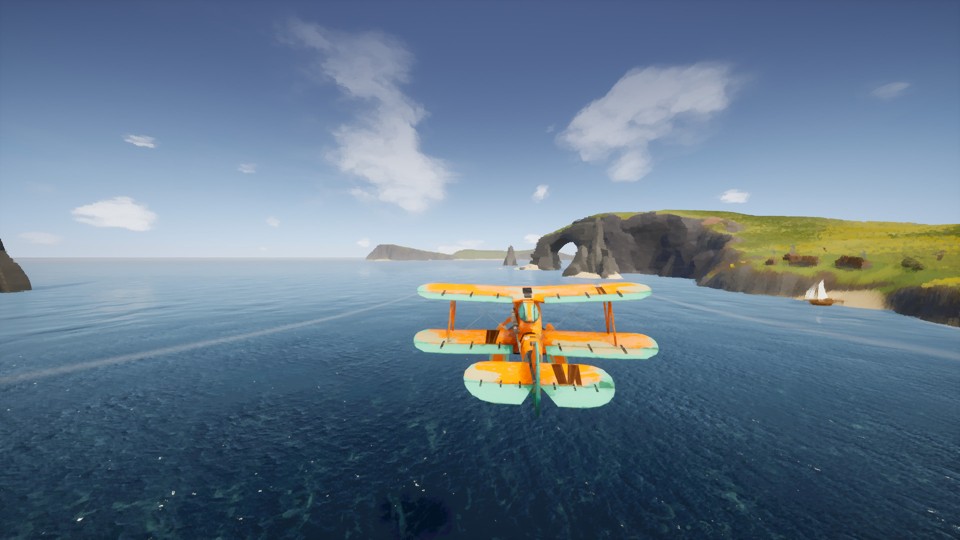
Skye is a pleasant, very painterly and completely free arcade flight game. Except for a few races that can be challenging, everything is quite relaxing.
The Tartarus Key is not particularly scary – it is not a survival horror, there are no monsters, hardly any jump scares, and no existential stuff either – more atmospheric. A haunted house attraction, more or less. Puzzles are all contained, escape room style, so you always know that you can solve them. Good characters, not a bad story.
Iron Lung is brilliance in minimalism. You basically stare at three numbers (X, Y, angle) and four buttons (2 for angle and 2 for movement) all the time, but the pressure (pun intended) of being in a barely holding metal apparatus in the depths of an alien ocean is palpable. It is also quite short.
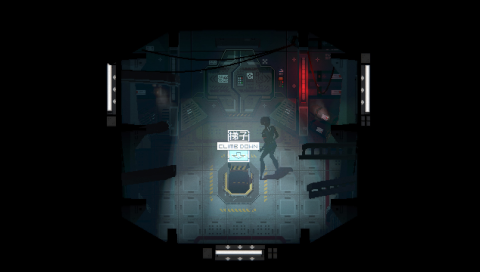
Signalis is an interesting example of two things. First, it takes gameplay from old survival horror games and uses it with very little modernization. This means that if you want that kind of thing (I apparently did), it’s great, but if you don’t want to deal with very limited inventory, respawning enemies, and a lack of clear direction, there’s not much to mitigate that. There is some mitigation, on the level of, say, the Resident Evil 1 remake, but that’s about it (the map is good, for example, but is also missing for a chunk of the game). Second, it is clearly influenced by a lot of things – movies, books, games – that are, to put it politely, problematic. But unless I missed something, which is possible, it doesn’t bring bad elements from those inspirations.
Wretched Depths is a free little fishing game with Twin Peaks-style weirdness and some eldritch horror. You catch fish with your upgradeable fishing rod and lure, and some strange things out of the corner of your eye.
Afterdream was not bad, but disappointing. Gameplay is okay, just a simple point and click. The addition of a camera was kind of meh. The biggest flaw is the story. Some time ago, I played the first Distraint, which was made by the same person, at least it had something to say.
Robots are animals too!

While Breath of the Wild and Tears of the Kingdom shake up the open-world formula, Horizon: Zero Dawn proves that if you have a good checklist, icons-on-a-map, classic-style open-world game, I probably still like it.
And to call it just classic is unfair: it aptly borrows some gameplay from the Monster Hunter games, and while the story isn’t entirely unique, it has plenty of its own takes on post-apocalyptic genre tropes. Is it Nausicaä-like? Without a doubt!
But the game is not without its flaws: unfortunately, it borrows very heavily from indigenous cultures. I’m not the best person to go into the details, but there are plenty of articles about it. It is doubly unfortunate, because it does good representation too.
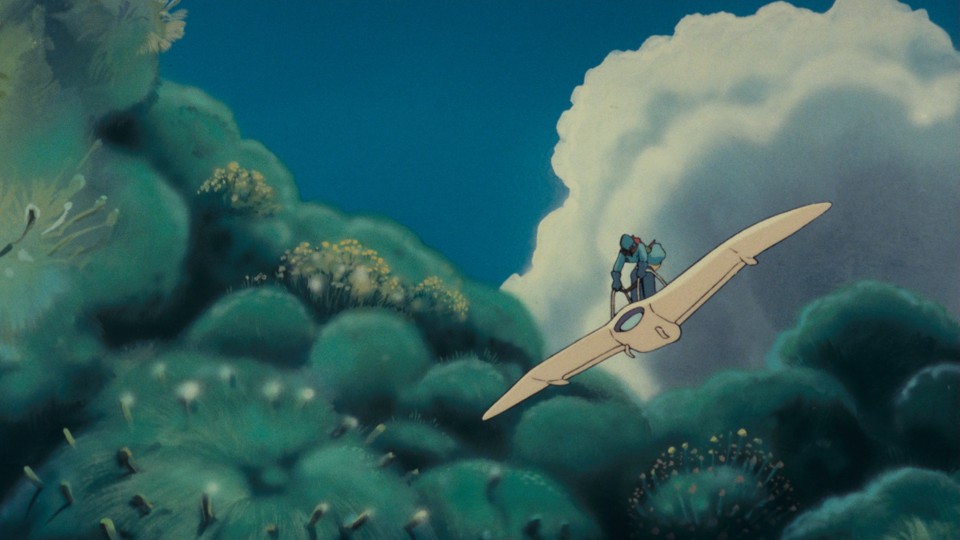
Speaking of which, I finished reading the Nausicaä of the Valley of the Wind books and rewatched the movie. The difference between the two is quite significant: sort of like between the pilot for the TV show, with an early version of a script and a different take on the characters, maybe even different actors, and said TV show.
The whole thing is kind of huge – and maybe this is my only complaint about the books, that some of the storylines are a bit complex, and some stuff can be cut down without much loss – so I just want to mention two things that I particularly liked.
First, while Nausicaä is a very proactive character, she also inspires other people, but not through words, but through actions and just being. I am not sure how intentional this was, but this is what I get from sociology: this is what changes people’s minds, not arguments or debates, but the existence of people with different opinions.
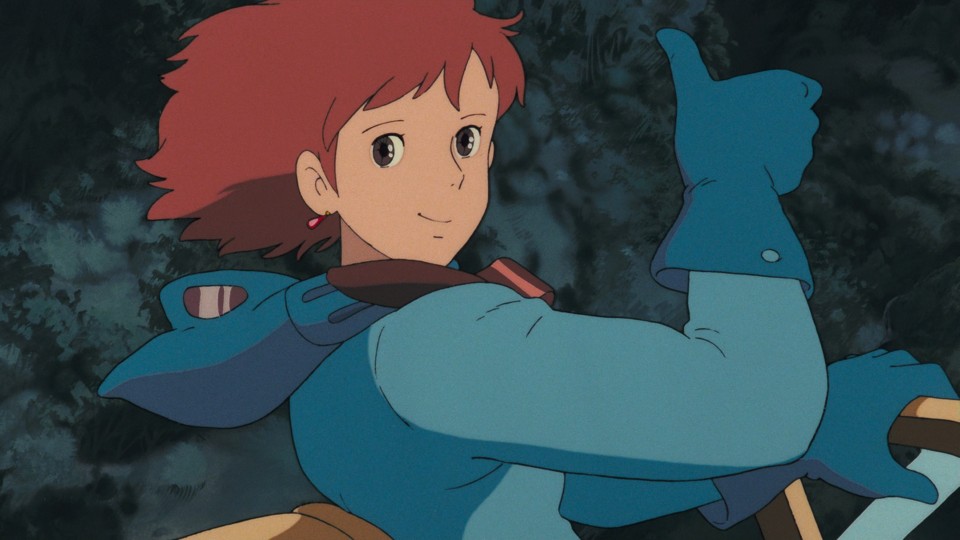
Second, is it’s take on nature. There are a lot of people who use words like “fix,” “repair,” and the like in relation to climate change. But that attitude is what got us into this mess in the first place! We must learn to be part of nature, not above it. Including the things we have already broken, they are already part of it too. Pretty big topic to go into right now, but yeah, people should read the Nausicaä books carefully.
The completionist in me forced me to finish the original Twin Peaks. By social osmosis, I knew it was weird. Now I know that it is weird. There’s some cool stuff, a lot of bad stuff, overall kind of pointless, both as a show and as a story. In other words, I have no desire to see a movie or a third season. The completionist in me is fine with that.

I can’t really say that Fuel is a good game and I recommend it. It is mediocre or decent, depending on how generous you are. So I’ll just explain why I finished it and enjoyed it.
I like games where you travel. Fuel has a huge map, one of, if not the biggest one. I just did races – there are some cool ones, but a lot of them are just a chore – so I could uncover collectibles, and then I would drive around while listening to a podcast or a video.
This other part is debatable, but from this game I get vibes of what I call quiet apocalypse. The first paragraph of the plot of Yokohama Kaidashi Kikō on Wikipedia explains it very well, and it is easy to see why something like this can actually be not terrifying, but comforting. It is also the least spoiler-y example I can think of. No, Fuel is not Nausicaä-like :)
I also finished Sudocats. The developers found their thing (their company is called Devcats), very subtle), it’s not a bad thing, but there is not much beyond that. Also, in this game I just switched to working with numbers instead of cats, you know.